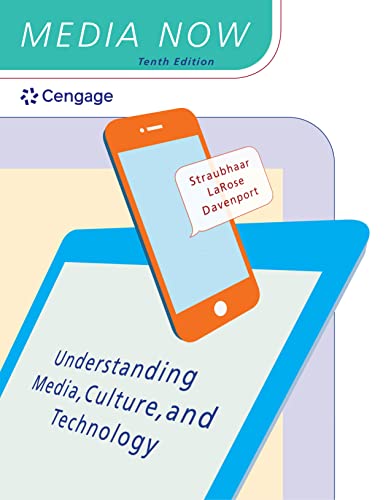
Media Now: Understanding Media, Culture, and Technology

we are “amusing ourselves to death” (Postman, 1986). Or, in the words of another critic, we are living in a “filter bubble” (Pariser, 2011) in that the personalized algorithms that Google, Amazon, Facebook, and others use to feed us online information trap us in a world where we are never subject to new ideas or people that diverge from those we
... See moreJoseph Straubhaar • Media Now: Understanding Media, Culture, and Technology
McLuhan further theorized that in society’s zeal to conquer technology, we might progress in technology, but we would regress as a culture. Whereas technology could extend human capabilities in one way, it would cut off others. For example, the telephone would extend the voice, but amputate printed correspondence. These amputations could have
... See moreJoseph Straubhaar • Media Now: Understanding Media, Culture, and Technology
The case for archiva practice
in McLuhan’s view, the invention of the printing press led to the rise of the scientific method and later to our technological society by forcing thinkers to put their words in linear order and their arguments in a logical progression—just like the words on a printed page. This led to thinking about the natural world in the same linear fashion,
... See moreJoseph Straubhaar • Media Now: Understanding Media, Culture, and Technology
The gatekeeping theory (Shoemaker, 1991; White, 1949) emphasizes the crucial role of the so-called gatekeepers, the media managers and editors who can either open or close “the gate” on a story or shape how it is presented. Gatekeepers are influential. They can squelch new ideas and suppress the news of events that others might find important.
Joseph Straubhaar • Media Now: Understanding Media, Culture, and Technology
we decide which innovations to pursue according to the expected outcomes of our adoption decision, and we then continually monitor the fulfillment of those expectations.
Joseph Straubhaar • Media Now: Understanding Media, Culture, and Technology
The diffusion of innovations theory has its roots in sociology and helps us understand why people adopt new communication behaviors (Rogers, 1995). Diffusion is a process by which an innovation—a new way of doing things—is communicated through media and interpersonal channels over time among the members of a community.
Joseph Straubhaar • Media Now: Understanding Media, Culture, and Technology
Advertisers undervalue minority audiences, for example, even after correcting for income levels (Napoli, 2002); that benefits advertisers of products targeted to minorities by reducing their advertising costs. Minorities have a difficult time obtaining financing, which is a barrier to minority ownership in broadcasting (Braunstein, 2000); that
... See moreJoseph Straubhaar • Media Now: Understanding Media, Culture, and Technology
Women influence the development of technology. The telephone was intended as an instrument of communication for the (male-dominated) business world, and telephone companies discouraged “trivial” social use of the telephone (mostly by women) to keep the lines clear for important (i.e., male-originated) business calls. However, women staged a quiet
... See moreJoseph Straubhaar • Media Now: Understanding Media, Culture, and Technology
As commercial media reach into more societies, people in different parts of the world become aware of Coca-Cola and Nike shoes. That may undermine ties to their traditional cultures and spur the growth of consumer culture (Ewen, 2008). The danger is that commercial messages may impact our innermost desires and perceptions of ourselves, making us
... See more